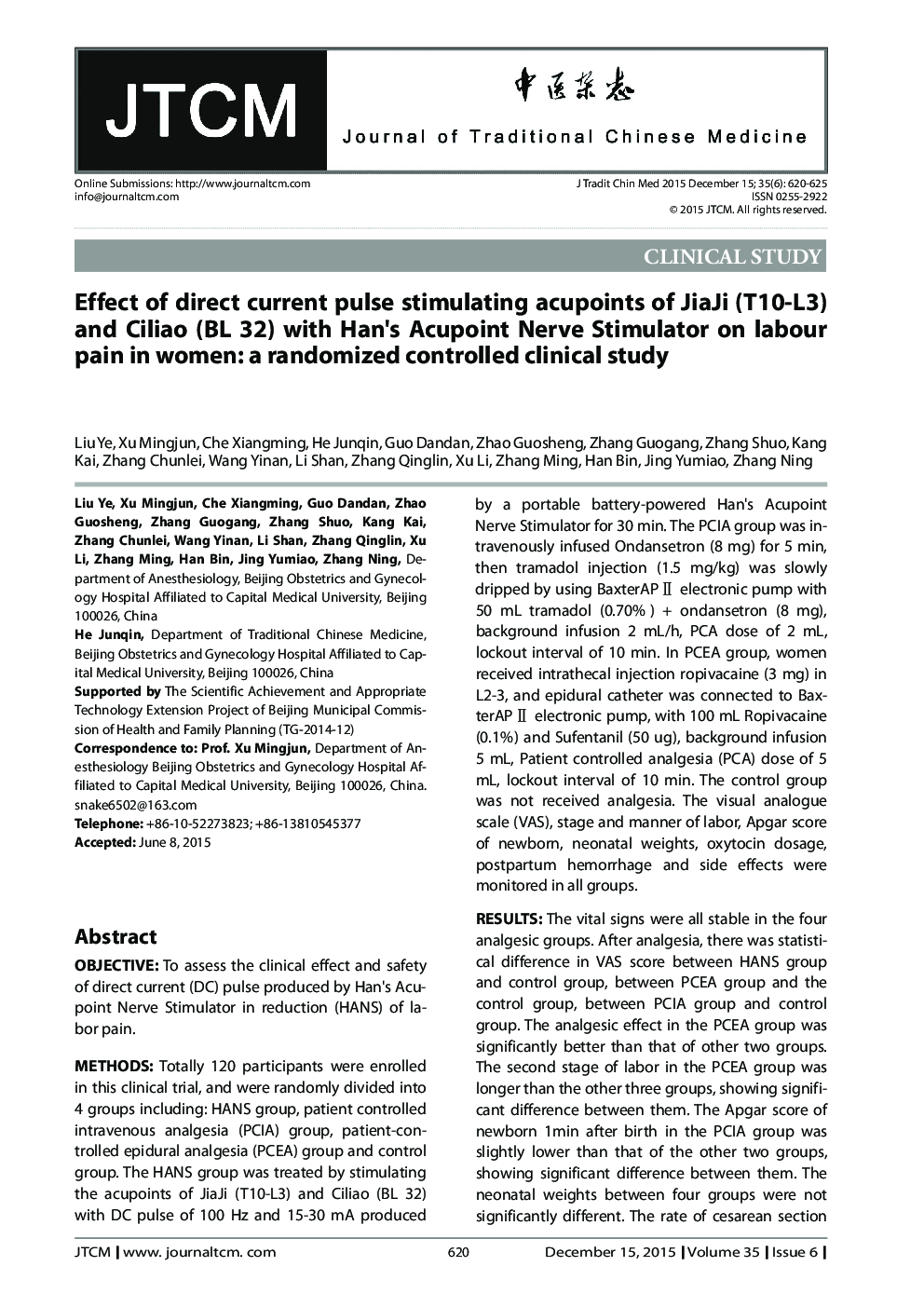| Article ID | Journal | Published Year | Pages | File Type |
|---|---|---|---|---|
| 4201115 | Journal of Traditional Chinese Medicine | 2015 | 6 Pages |
ObjectiveTo assess the clinical effect and safety of direct current (DC) pulse produced by Han's Acupoint Nerve Stimulator in reduction (HANS) of labor pain.MethodsTotally 120 participants were enrolled in this clinical trial, and were randomly divided into 4 groups including: HANS group, patient controlled intravenous analgesia (PCIA) group, patient-controlled epidural analgesia (PCEA) group and control group. The HANS group was treated by stimulating the acupoints of JiaJi (T10-L3) and Ciliao (BL 32) with DC pulse of 100 Hz and 15-30 mA produced by a portable battery-powered Han's Acupoint Nerve Stimulator for 30 min. The PCIA group was intravenously infused Ondansetron (8 mg) for 5 min, then tramadol injection (1.5 mg/kg) was slowly dripped by using BaxterAP II electronic pump with 50 mL tramadol (0.70%) + ondansetron (8 mg), background infusion 2 mL/h, PCA dose of 2 mL, lockout interval of 10 min. In PCEA group, women received intrathecal injection ropivacaine (3 mg) in L2-3, and epidural catheter was connected to BaxterAP II electronic pump, with 100 mL Ropivacaine (0.1%) and Sufentanil (50 ug), background infusion 5 mL, Patient controlled analgesia (PCA) dose of 5 mL, lockout interval of 10 min. The control group was not received analgesia. The visual analogue scale (VAS), stage and manner of labor, Apgar score of newborn, neonatal weights, oxytocin dosage, postpartum hemorrhage and side effects were monitored in all groups.ResultsThe vital signs were all stable in the four analgesic groups. After analgesia, there was statistical difference in VAS score between HANS group and control group, between PCEA group and the control group, between PCIA group and control group. The analgesic effect in the PCEA group was significantly better than that of other two groups. The second stage of labor in the PCEA group was longer than the other three groups, showing significant difference between them. The Apgar score of newborn 1min after birth in the PCIA group was slightly lower than that of the other two groups, showing significant difference between them. The neonatal weights between four groups were not significantly different. The rate of cesarean section in the control group was significantly higher than that of the labor analgesia group, there was statistically difference in four groups. The number of PCIA group that used oxytocin was lower than that of other three groups. There was no significant difference in postpartum hemorrhage between four groups. The side effects of the PCEA group were itching, uroschesis and neonatal asphyxia and PCIA group were nausea and vomiting and neonatal asphyxia. However, fewer side effects were observed in the HANS group.ConclusionThe DC pulse produced by HANS may be a non-pharmacological alternative to labor pain with fewer side effects.
